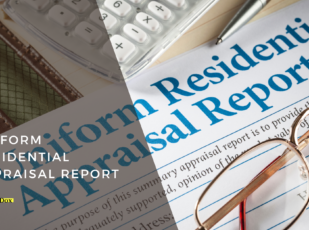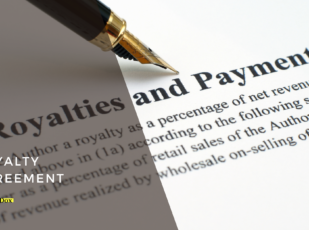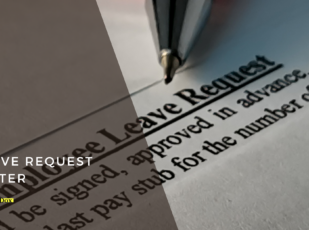
Trademark License Agreement Template
9 Downloads
IP and Copyright
December 19, 2024
Sayantani Dutta
Trademarks are the lifeblood of brands. They not only offer quality and recognition for a brand and its products, but also signify trust. The Trademark License Agreement is a legal instrument that serves the purpose of granting permission to use a trademark under specified conditions. Typically, this permission is granted by the trademark owner (licensor) to another party, such as another business that has a commercial arrangement with the owner (licensee).
The terms of this agreement specify how the trademark will be used, under which conditions, and how quality control should be ensured. The trademark owner is not transferring the rights of the trademark or its ownership to the licensee. It is only a device used to put down the conditions for the use of the trademark. For example, a trademark owner can sign a Trademark License Agreement with another business to have them use their brand logo in conjunction with their own product.
This way, the provisions of this agreement not only allow for opportunities in the business world, but also protect the intellectual property of the trademark owner. The document needs to cover all bases, be comprehensive, and have legal soundness for this to work properly without any disputes. That is why understanding what this agreement is, its benefits, and the risks of using an inadequate Trademark License Agreement Template for your purpose is critical.
In this article, that is precisely what we are going to focus on—before concluding with FreshDox.com’s professionally developed and fully customizable template for trademark license agreements that offers sufficient legal precision and comprehensiveness that businesses need. So, without further ado, let’s dive right into it!
What is a Trademark License Agreement?
A Trademark License Agreement is a legal document signed between two parties. One party is the owner of a trademark (which is a type of intellectual property and often carries brand value). The other party is a business, organization, or individual that wishes to use that trademark for its own purposes.
What these purposes are will be agreed upon before the signing of the Trademark License Agreement.
The agreement, itself, will only put down all those terms, conditions, stipulations, warranties, severability clauses, expected licensee uses, covenants under the governing law, indemnification conditions, licensee’s rights, licensor’s rights, arbitration clauses, minimum quality standards, and so on, about the agreement so that both parties can avoid legal disputes, ambiguities, and other types of problems down the line.
The licensee might wish to use the trademark on their products and services, or put it to another branding or marketing use. The agreement will outline the terms under which this is being allowed to happen. For example, what are the conditions under which the licensee is permitted to use the trademark—such as the scope of use, duration, geographical area, quality control measures, and financial arrangements such as royalties (if it is not royalty-free)? The licensee might want to use the logo on a particular product range for co-branding and trust purposes in a limited area and duration. For this, they will need a robust Trademark License Agreement.
It ensures that the trademark’s integrity and value are preserved while allowing its strategic exploitation. The trademark (or service mark) is still wholly owned by the licensor. Unlike what happens in an intellectual property assignment agreement, no ownership is being transferred through a Trademark License Agreement.
Importance of a Trademark License Agreement
The key role that this document plays is the protection of both the licensor and the licensee from unforeseen legal disputes and usage-related issues down the line.
The licensor gets a legal framework to monetize and expand their brand without relinquishing the ownership of the trademark as if they were getting into a joint venture. This ensures that the trademark is used in a manner consistent with its reputation (quality control measures are often quite detailed about how the trademark can be used).
On the other hand, the licensee is granted legal authorization to use a trademark to improve their offerings, increase the trustworthiness of their products, promote a new tie-up, or gain an edge in terms of market competitiveness.
Both sides win. And neither side wants their rights to be violated. The licensor does not want the licensee to misuse the trademark in any way or dilute the trustworthiness of the brand power by using it inappropriately. The licensee does not want the licensor to incorrectly enforce their ownership of the trademark and keep them from using it to its full capacity.
Needless to say, protecting both sides this way requires a lot of legal precision and comprehensiveness in terms of the conditions and warranties being provided. The authorized representatives will often go through multiple rounds of discussions and put together all the warranties, obligations, waivers, disclaimers, product liability expectations, terms for royalty payments, and so on, into this document. Ultimately, a well-structured and comprehensive agreement minimizes the risk of misunderstandings and potential legal disputes over trademark use.
Not Having a Good Trademark License Agreement Template
Operating without a comprehensive Trademark License Agreement, or relying on a generic, insufficient template, can lead to significant risks for both parties. We have already discussed its importance, so it is only natural to follow that up by discussing the potential risks you are looking at if you:
- Operate without a trademark license, or
- Rely on an inadequate Trademark License Agreement Template as your starting point
The licensor might soon be seeing unauthorized or inappropriate use of the trademark if the licensee tries to exploit any gaps or ambiguities in the agreement. In any legal document, more important than what they are supposed to do, you need to put stress on things that they are not supposed to do. Often, free templates you will find online lack the comprehensiveness required for protecting licensed products and trademarks.
This, in turn, dilutes the value of the trademark and can even harm the brand’s reputation.
On the other hand, the licensee could also face problems if the agreement is not rock-solid, or based on a shallow template. Most importantly, such an agreement will increase the risk of infringement claims.
For instance, if the agreement is not specific to the smallest detail—like which complementary or background colors can the trademark be used on—then the licensor can raise a dispute if they feel as if their trademark is not being used correctly in terms of color combination. Such action can and will be considered a breach. Such breach will lead to action. Such action will lead to notice, and finally, such notice will lead to a legal dispute in a court of competent jurisdiction under the laws of the state.
Such termination of the trademark agreement (because violations will definitely lead to the termination of this agreement), whether the advertising material really violated a clause or whether it was really an instance of unauthorized use, will lead to legal expenses. More importantly, all this will also lead to the loss of investment in marketing and product development, damage to the reputation of the licensee (which might keep them from signing similar deals in the future with other companies), and bad taste.
Intellectual property rights are pretty strong. So, if a licensee desires to use a trademark, particularly through a non-exclusive license, then it is their due diligence to ensure that infringement clauses (and the remaining provisions too) related to the use of the marks are comprehensive, detailed, and cover all bases.
Both sides stand to lose if the agreement is not of high quality. More often than not, a vague agreement does not provide adequate mechanisms for quality control, royalties, and dispute resolution under the applicable laws.
Key Elements of a Trademark License Agreement
Okay, so now that you have understood the importance of a Trademark License Agreement and the risks of relying on an inadequate one, it is time to take a closer look at the key ingredients of the entire agreement. The exact subject matter held under every section hereof will differ from deal to deal. But some things are common across the board—such as the provision for a minimum royalty or the indication of the jurisdiction for any legal disputes arising out of any breach of this agreement.
Below is a list that you can follow to cross-check if your agreement or template has such rights and disclaimers for a seamless grant of license.
- Identification of Parties: Clearly state the names and details of the licensor and licensee.
- Description of the Trademark: Provide a detailed description of the trademark or service mark being licensed, including registration numbers if applicable. Include any branding or corporate name as well.
- Scope of Use: Define how, where, and on what products or services the trademark can be used by the licensee. Be as detailed as possible. As the branding and marketing guidelines for all companies differ a lot, it is up to the sole discretion of the licensor what usage limitations they want to put on their trademark being licensed.
- Geographical Area: Specify the geographical territory where the licensee is allowed to use the trademark. Even if the licensee serves other territories or markets, they will not be able to use it there.
- Duration: State the duration of the agreement and conditions for renewal.
- Quality Control: Outline the standards the licensee must adhere to in using the trademark to protect its integrity. Most likely, the licensor will already have some brand guidelines for the acceptable use of the trademark, but in case there are no such guidelines, they need to be created for this purpose. Your trademark is your IP and it can only be used in particular ways.
- Financial Terms: Detail the royalty payments or other financial compensation agreed upon.
- Termination: Include terms under which the agreement may be terminated by either party.
- Dispute Resolution: Specify how disputes related to the agreement will be resolved and what will be the jurisdiction where the disputes will be handled.
- Governing Law: Indicate the legal jurisdiction governing the agreement.
FreshDox.com’s Trademark License Agreement Template
Here at FreshDox.com, we understand the complexities often involved in licensing a trademark. There is also a need to have a legally binding and comprehensive agreement with clear terms so that there is no scope for ambiguities. We offer a meticulously developed Trademark License Agreement Template for this purpose. Created by legal experts specializing in intellectual property law, our template is very comprehensive, in that it covers all the essential elements required for a valid and effective licensing agreement to keep confusion at bay. It is also fully customizable, so you can edit, add, and remove parts as per your need, and expand upon the quality control measures as you see fit.
Subscribing to FreshDox.com gives you access to a wide array of legal document templates. We also offer a 14-day trial period, which you can use to test the benefits of our Basic and Premium Membership Plans. The Basic Membership Plan gives you access to up to three document template downloads per month. The Premium Membership Plan is ideal for those with ongoing needs—giving access to unlimited downloads per month.
Businesses and legal professionals involved in trademark licensing will find our Trademark License Agreement Template to be top-notch, covering all bases and being downloadable in Word and PDF formats.
So, what are you waiting for!? Secure your brand and ensure your trademark is used appropriately with FreshDox.com’s Trademark License Agreement Template! Sign up today to access our expertly crafted template that can facilitate a successful and legally compliant licensing partnership.
Popular searches:
- Trademark License Agreement Template pdf
- Trademark License Agreement Template sample
- Trademark License Agreement Template download
- Trademark License Agreement Template format
- Trademark License Agreement Template template
- Trademark License Agreement Template word
- Trademark License Agreement Template free
Related Templates
Discover more templates that align with your needs and preferences.

Ready to Sign Up?
Sign up for FreshDox.com’s 7-day trial and discover why so many individuals and businesses trust us for their legal document template needs.
- Cancel any time
- 7-day free trial
- From 300+ Customer Reviews
















